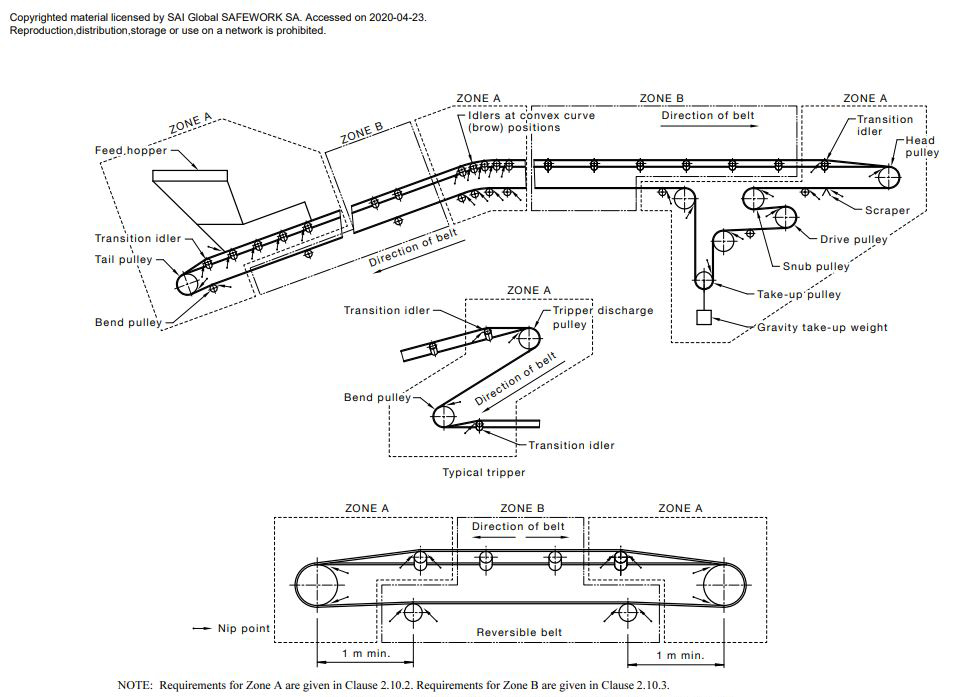Conveyors have many moving parts and potential nip points, which can make them a dangerous item of equipment.
Training
During the training of conveyor operators, each operator must understand the safe operation of the conveyor and all safety precautions, including:
- the method of stopping and starting the conveyor
- the hazards in the course of normal working of the conveyor
- the hazards from bad practices, inattention, and misuse
- the purpose of the guard or safety device, and how the guard or device may fail
- informing the person in charge if any faults or defects arise, and the danger to the operator in attempting to correct any faults.
During the training period, a conveyor operator must be supervised by a worker with a thorough knowledge of conveyors.
Safe operating procedures
The following safe operating procedures apply to all conveyor installations:
- ensure all START/STOP and emergency controls are marked
- ensure persons working near a conveyor are aware of the location of START/STOP and emergency controls
- keep the area clean and tidy. Good housekeeping eliminates hazards such as tripping, slipping and falling
- isolate and danger tag the power source before working on a bogged or overloaded conveyor
- ensure all persons wear appropriate clothing and avoid loose clothing near moving conveyors
- ensure conveyors are guarded/fenced (if not a walk-under conveyor)
- do not clean belts, pulleys, drum, trough or return idlers while a conveyor is moving
- do not ride on a moving conveyor
- do not repair or maintain a conveyor while in motion. If repairs, adjustments or tracking are required on a moving conveyor belt without normal guarding, it is important that:
- the work is carried out by an authorised competent person
- an attendant is at the emergency stop station
- the appropriate safe work procedure is in place.
Starting the conveyor
Before you start a conveyor, check that:
- no personnel are working on the conveyor, and that access platforms are clear (inspect the area to make sure)
- all the guards are fitted
- the emergency stop switches are working and marked
- lanyards are fitted and working correctly
- the warning siren is working
- firefighting devices are in place and ready for use
- all the lights are working and clean.
Nip points
The most important danger points on belt conveyors are the nip points marked with arrows.

Further information
AS/NZS 4024.3611:2015 : Safety of machinery - Conveyors - Belt conveyors for bulk materials handling - available from our Library




